Jadeite, hailed as the “King of Gems,” captivates jewelry enthusiasts with its warm texture, rich hues, and profound cultural heritage. Natural jadeite bracelets, perfect for daily wear or collection, not only showcase taste but also carry auspicious meanings. However, the market offers jadeite bracelets of varying quality, and a single misstep could lead to disappointment. This guide reveals the top 5 pitfalls to avoid when selecting natural jadeite bracelets, helping you effortlessly find your ideal piece.
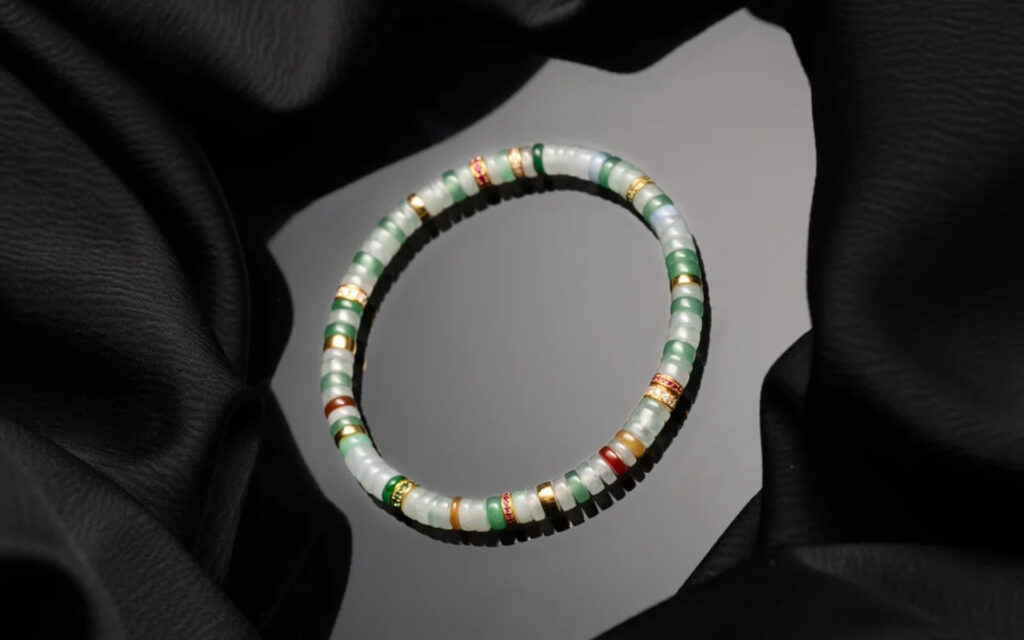
1. Pitfall 1: Beware of “Dyed Jadeite” Masquerading as Natural Color
Issue: Some merchants, seeking high profits, dye low-quality or colorless jadeite into vivid greens, purples, etc., passing off inferior goods as genuine.
Identification Methods:
Observe Color Distribution: Natural jadeite exhibits seamless color penetration from core to surface, while dyed jadeite shows superficial, blurred edges.
Magnifier Inspection: Under 10x magnification, dyed jadeite may reveal concentrated color roots or dye seepage along fractures.
Authoritative Certification: Request national-level gemological certificates (e.g., NGTC, GIA) confirming no dyeing treatment.
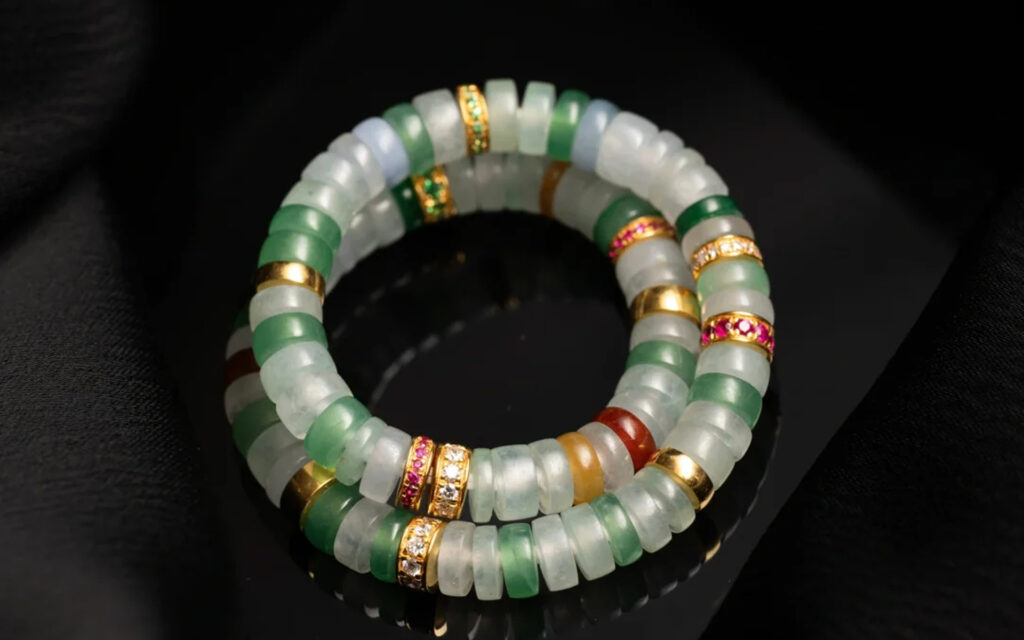
2. Pitfall 2: Avoid “Acid-Washed and Resin-Filled” B-Grade Jadeite
Issue: B-grade jadeite undergoes strong acid immersion to remove impurities, followed by resin filling to seal cracks. While appearing flawless externally, its structure is compromised, potentially posing health risks with prolonged wear.
Identification Methods:
Translucency Test: Natural jadeite exhibits dense internal structure; B-grade may show acid-etched mesh patterns or uneven transparency.
Sound Test: Gently tap the bracelet—natural jadeite produces a crisp sound, while B-grade sounds dull.
UV Light Inspection: B-grade may fluoresce under ultraviolet light.
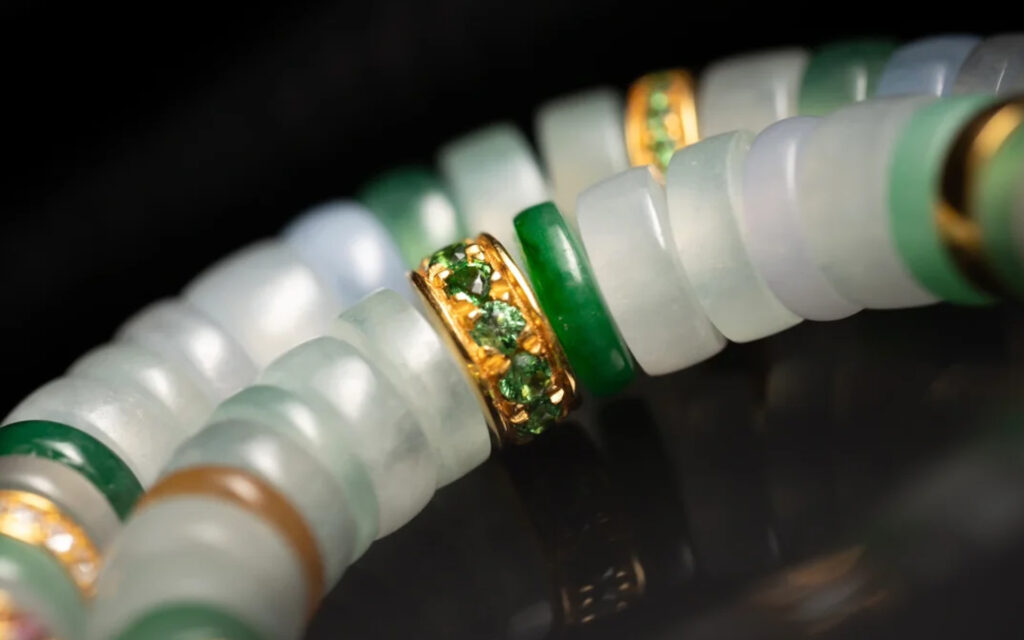
3. Pitfall 3: Don’t be fooled by “thick” appearances; beware of hollowed-out weight-adding tricks
Issue: Some merchants hollow out the back of jadeite to make bracelets appear thicker and of higher quality, artificially inflating weight and significantly reducing value.
Identification Methods:
Side-Light Inspection: Shine a flashlight from the side; hollowed jade will allow light to pass through, creating a “thin shell” effect.
Weight Assessment: Natural jade has high density and feels heavier in the hand than B-grade or hollowed jades of equal volume.
Inquire About Craftsmanship: Directly ask the seller if “thickening” or “water adjustment” techniques were used, avoiding vague responses.
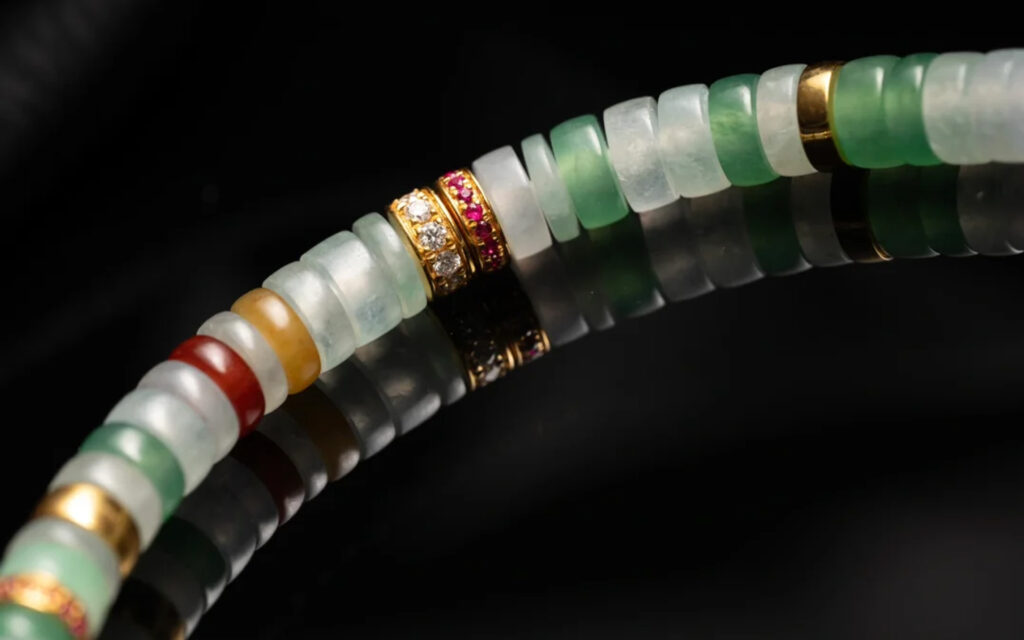
4. Pitfall 4: Beware of “Low-Price Traps” – You Get What You Pay For
Issue: Market tactics like “ice-quality jade for $100” often promote quartzite, water-mist jade, or extremely low-grade jadeite.
Identification Methods:
Understand Market Value: Natural jadeite prices are influenced by type, translucency, color, and craftsmanship. Ice-type and glass-type bracelets typically command higher prices.
Avoid Bargain Hunting Mentality: Exercise extreme caution if prices are significantly below market value.
Choose Reliable Sources: Prioritize brand boutiques, established shops, or sellers offering re-inspection services.
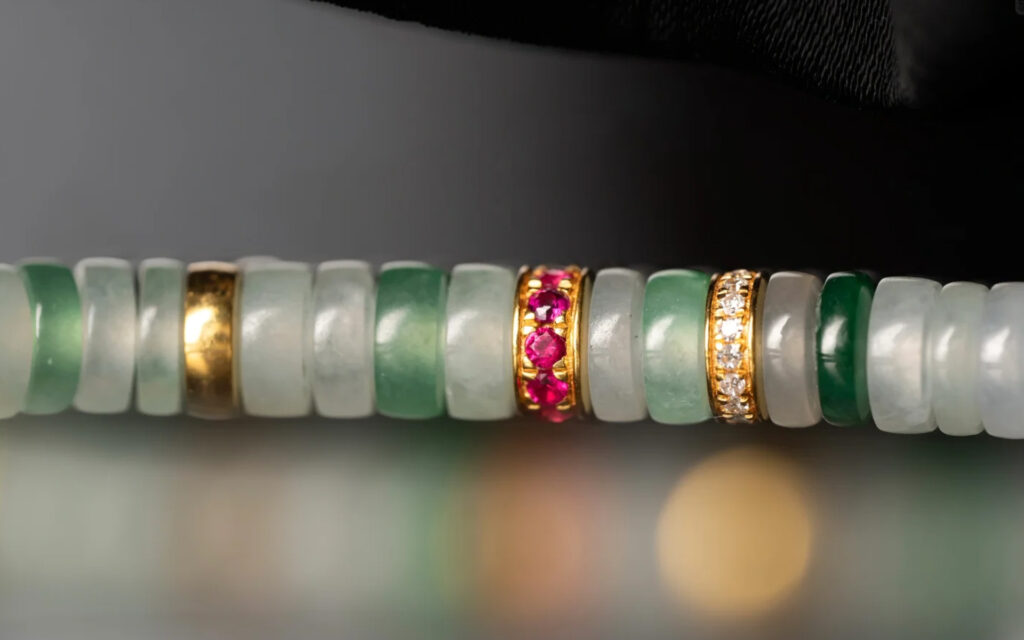
5. Pitfall 5: Verify “A-grade” labeling; reject ambiguous descriptions
Issue: Some sellers use vague terms like “natural” or “authentic” to sell B-grade (treated), C-grade (dyed), or D-grade (non-jadeite) products.
Identification Methods:
Specify A-grade: A-grade refers to untreated natural jadeite. Request written confirmation from the seller.
Check Certificate Notes: Appraisal certificates will specify “Treatment: None” or “Grade A Jadeite.”
Retain Proof: Request an invoice clearly stating “Natural Jadeite Grade A” for potential claims.
Shopping Tips:
Budget First: Set a budget based on your needs to avoid impulse purchases.
Try Before Buying: Test the bracelet’s size and comfort to ensure it fits your wrist.
Cultural Symbolism: The number of beads and color combinations often carry auspicious meanings (e.g., 18 beads symbolize the “Eighteen Arhats”). Choose based on personal preference.
Regular Maintenance: Avoid impacts and high temperatures. Wipe with a soft cloth periodically to maintain luster.
Selecting a natural jadeite bracelet is both a technical skill and a matter of serendipity. By avoiding the five pitfalls above and aligning with your personal aesthetic and budget, you’re sure to find a treasure that delights your heart and holds collectible value. Remember, the true beauty of jade lies in its natural charm and the patina of time, not in flashy gimmicks. May you soon encounter that “destiny-bound” jadeite bracelet!